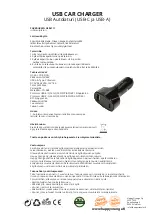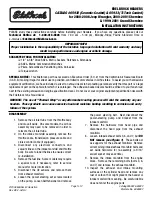
to tread quality, tire traction and temperature
characteristics. The quality grading assessment is
made by the manufacturer following specifications
from the U.S. government. The quality grade of a
tire is printed on the side wall of the tire.
Recommended tire pressure: the recommended
tire pressure is the tire pressure specified for the
tires mounted on the vehicle at the factory.
The tire and information placard contains the rec-
ommended tire pressure for cold tires, the maxi-
mum permissible load and the maximum permissi-
ble vehicle speed.
The tire pressure table contains the recommen-
ded tire pressure for cold tires under various oper-
ating conditions, i.e. loading and/or speed of the
vehicle.
Increased vehicle weight due to optional equip-
ment: the combined weight of all standard and
optional equipment available for the vehicle,
regardless of whether it is actually installed on the
vehicle or not.
Rim: the part of the wheel on which the tire is
installed.
GAWR (Gross Axle Weight Rating): the GAWR is
the maximum gross axle weight rating. The actual
load on an axle must never exceed the gross axle
weight rating. The gross axle weight rating can be
found on the vehicle identification plate on the
B‑pillar on the driver's side.
Speed rating: the speed rating is part of the tire
identification. It specifies the speed range for
which a tire is approved.
GVW (Gross Vehicle Weight): the gross vehicle
weight comprises the weight of the vehicle includ-
ing fuel, tools, the spare wheel, any accessories
installed, occupants, luggage and the trailer nose-
weight, if applicable. The gross vehicle weight
must not exceed the gross vehicle weight rating
GVWR as specified on the vehicle identification
plate on the B‑pillar on the driver's side.
GVWR (Gross Vehicle Weight Rating): the GVWR is
the maximum permitted gross weight of the fully
laden vehicle (weight of the vehicle including all
accessories, occupants, fuel, luggage and the
trailer drawbar noseweight if applicable). The
gross vehicle weight rating is specified on the
vehicle identification plate on the B‑pillar on the
driver's side.
Maximum weight of the laden vehicle: the maxi-
mum weight is the sum of the curb weight of the
vehicle, the weight of the accessories, the maxi-
mum load and the weight of optional equipment
installed at the factory.
Kilopascal (kPa): metric unit for tire pressure.
6.9 kPa corresponds to 1 psi. Another unit for tire
pressure is bar. 100 kilopascal (kPa) equals 1 bar.
Load index: in addition to the load-bearing index,
the load index may also be printed on the side
wall of the tire. This specifies the load-bearing
capacity of the tire more precisely.
Curb weight: the weight of a vehicle with standard
equipment including the maximum capacity of
fuel, oil and coolant. It also includes the air condi-
tioning system and optional equipment if these
are installed on the vehicle, but does not include
passengers or luggage.
Maximum tire load: the maximum tire load is the
maximum permissible weight in kilograms or lbs
for which a tire is approved.
Maximum permissible tire pressure: maximum
permissible tire pressure for one tire.
Wheels and tires 461
Summary of Contents for S-Class 2023
Page 8: ...Left hand drive vehicles 6 At a glance Cockpit...
Page 10: ...Left hand drive vehicles 8 At a glance Cockpit plug in hybrid...
Page 12: ...Standard driver s display 10 At a glance Indicator and warning lamps standard...
Page 15: ......
Page 19: ......
Page 20: ...18 At a glance Overhead control panel...
Page 22: ...20 At a glance Door operating unit and seat adjustment...
Page 26: ...24 At a glance Emergencies and breakdowns...
Page 200: ...To open or close turn controller 1 to the right or left 198 Climate control...
Page 445: ...Fold cover 1 down in the direction of the arrow Breakdown assistance 443...
Page 622: ......
















































